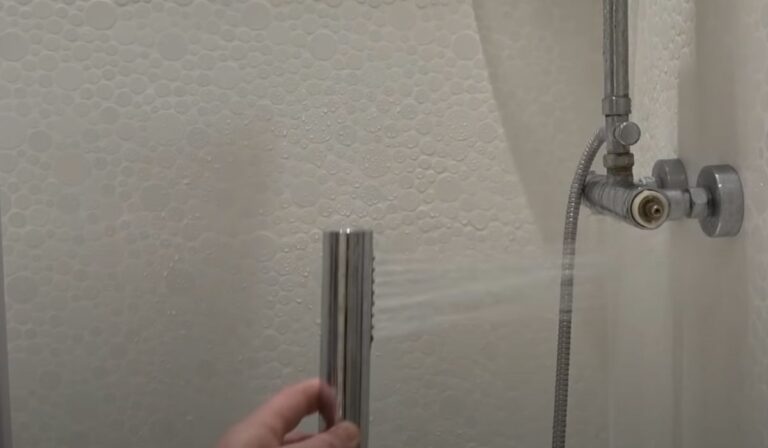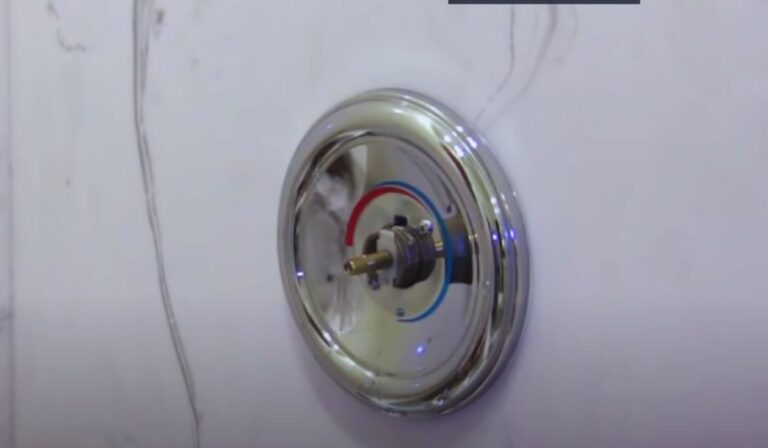What Size Pex for Shower
You’ll want to use ½ inch PEX tubing for most shower installations because it balances water flow and pressure well. This size is standard for single showers and works with most home water pressure levels. If you have multiple showerheads or long pipe runs, you might consider ¾ inch to avoid pressure drops. Proper sizing ensures a strong, consistent shower experience. Keep exploring, and you’ll discover tips on installation and how sizing impacts performance.
Understanding PEX Tubing Sizes
When working with PEX tubing for your shower, understanding the different sizes is crucial to ensure proper water flow and pressure. PEX tubing typically comes in diameters like 1/2 inch, 3/4 inch, and 1 inch.
The size you choose affects how much water reaches your showerhead and how strong the pressure feels. For shower supply lines, 1/2 inch PEX is often used because it balances flow and ease of installation. Larger diameters like 3/4 inch are common for main water lines or if you have multiple fixtures.
Factors Influencing PEX Size Selection for Showers
Choosing the right PEX size for your shower depends on several factors beyond just the diameter options.
You’ll need to consider the water pressure available in your home, as lower pressure might require a larger diameter to maintain flow. The length of the pipe run matters too—longer runs can cause pressure drops, so upsizing the PEX can help keep water flowing efficiently.
Also, think about the number of fixtures connected; if your shower has multiple outlets, a bigger size ensures consistent delivery. Local plumbing codes may set minimum size requirements, so double-check those.
Finally, your budget and ease of installation might influence your choice. Taking these factors into account ensures you pick the right PEX size that balances performance and practicality.
Common PEX Sizes Used in Shower Plumbing
What PEX sizes do you typically see in shower plumbing? The most common sizes are ½ inch and ¾ inch.
You’ll usually use ½ inch PEX for the actual shower lines because it fits well with standard shower valves and fixtures. It’s enough to provide a steady flow without wasting space or material.
For the main water supply lines that feed the shower, ¾ inch is more common since it handles higher volume and pressure, ensuring consistent delivery.
Occasionally, you might see 1 inch PEX in larger or multi-shower setups, but that’s less typical.
Always match your PEX size to your shower’s specific requirements and local plumbing codes to ensure optimal performance and safety.
Impact of PEX Size on Water Pressure and Flow
The size of your PEX pipes directly affects both water pressure and flow in your shower system. If you choose pipes that are too small, you’ll notice reduced water flow, leading to a weak shower experience.
On the other hand, larger pipes allow more water to pass through with less resistance, maintaining stronger pressure and consistent flow. However, oversized pipes can be unnecessary for typical shower setups and may increase material costs.
For most residential showers, ½-inch PEX is common and usually provides adequate pressure and flow. If your shower has multiple heads or a body spray system, stepping up to ¾-inch PEX might be necessary to ensure even distribution without pressure drops.
Selecting the right size ensures your shower performs efficiently, giving you a satisfying and reliable water flow every time.
Installation Tips for PEX in Shower Systems
When installing PEX in your shower system, you’ll want to plan your layout carefully to avoid unnecessary bends and ensure smooth water flow. Keep your runs as straight and short as possible, minimizing sharp turns that can restrict flow or cause kinks.
Use proper fittings designed specifically for PEX to maintain a secure, leak-free connection. Support the tubing with clamps or straps every 32 inches horizontally and every 4 feet vertically to prevent sagging or damage.
Avoid exposing PEX to direct sunlight, as UV rays can degrade the material. Finally, check local plumbing codes before starting to ensure compliance.
Comparing PEX With Other Plumbing Materials for Showers
After mastering installation tips for PEX in your shower system, you might wonder how it stacks up against other plumbing materials.
Compared to copper, PEX is more flexible, easier to install, and resists corrosion, making it ideal for tight spaces.
Unlike CPVC, PEX doesn’t require glue or special fittings, saving you time and reducing leak risks.
PVC pipes, while cheap, lack flexibility and can be brittle in cold temperatures, which isn’t ideal for showers.
PEX also handles temperature fluctuations well and maintains consistent water pressure.
If you want a durable, cost-effective, and straightforward plumbing solution, PEX is often your best bet.
It combines ease of installation with long-term reliability, making it a smart choice over traditional metals or rigid plastics in shower plumbing.
Frequently Asked Questions
Can PEX Tubing Be Used for Hot and Cold Water Lines in Showers?
Yes, you can use PEX tubing for both hot and cold water lines in showers. It’s flexible, durable, and resistant to corrosion, making it an excellent choice for reliable water delivery in your bathroom plumbing system.
How Do I Connect PEX Tubing to a Shower Valve?
You connect PEX tubing to a shower valve using PEX fittings and a crimp or clamp tool. Slide the ring over the tubing, insert the fitting into the valve, then secure it tightly with your tool for a leak-proof connection.
Is PEX Tubing Resistant to Chlorine in Municipal Water Supplies?
Yes, you’ll find PEX tubing resists chlorine in municipal water well. Its cross-linked structure helps prevent degradation, so your plumbing stays durable and safe even with regular chlorine exposure in your water supply.
What Tools Are Needed for Cutting and Crimping PEX Tubing?
You’ll need a PEX tubing cutter for clean, straight cuts and a PEX crimping tool to secure fittings. Additionally, having a deburring tool helps smooth edges, ensuring tight connections and preventing leaks in your plumbing projects.
Can PEX Tubing Be Buried in Walls Without Additional Protection?
You can bury PEX tubing in walls, but you should protect it from potential damage using a protective plate or conduit, especially where it passes through studs or joists, to avoid punctures or wear over time.
Conclusion
When choosing PEX tubing for your shower, you’ll want to consider factors like water pressure, flow rate, and installation space. Commonly, ½-inch PEX works well for most showers, balancing efficiency and ease of use. Remember, the right size ensures consistent water flow without pressure loss. By understanding your needs and comparing materials, you’ll make a smart choice that keeps your shower running smoothly and hassle-free for years to come.



